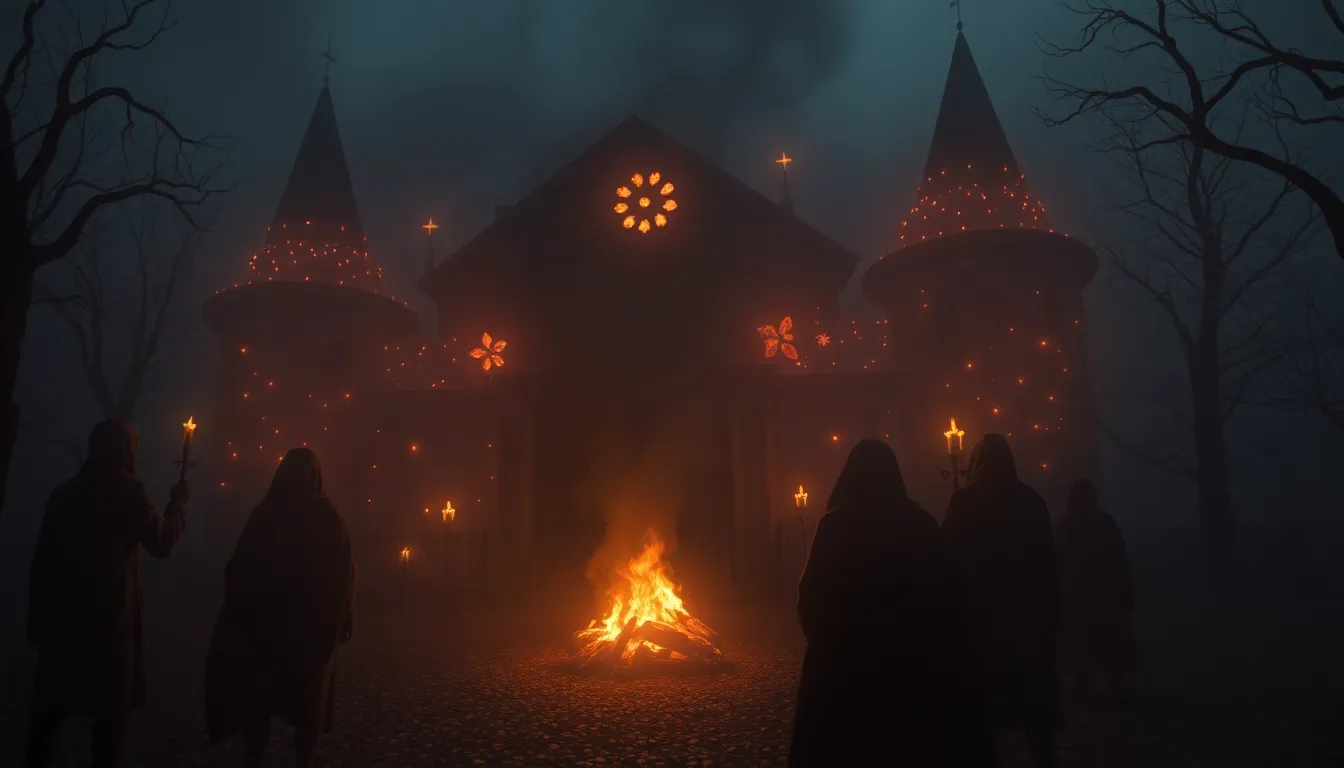The Trickster’s Playground: Where Folklore Meets Fun
I. Introduction to Tricksters in Folklore
The trickster archetype is a fascinating figure that has captured the imagination of cultures worldwide. Defined as a character who embodies mischief, wit, and often a subversive nature, tricksters play a crucial role in the narratives and moral lessons of folklore. Historically, these figures have transcended cultural boundaries, appearing in various forms and stories across the globe.
From ancient myths to modern storytelling, tricksters have been present in human narratives for centuries. Their actions often challenge the status quo, leading to transformations in society and individual perspectives. Understanding the significance of tricksters in folklore opens a window to deeper insights into human nature and societal norms.
II. Characteristics of Trickster Figures
A. Common traits and behaviors
Trickster figures frequently share several key characteristics:
- Humor and wit: Tricksters often employ humor as a tool for subversion and social commentary.
- Cunning and deception: They are known for their cleverness, using deception to achieve their goals.
- Boundary-breaking nature: Tricksters challenge societal norms and boundaries, often acting outside conventional behavior.
B. Examples from various cultures
Numerous cultures boast their own unique trickster figures:
- Anansi: A spider from African folklore, Anansi is celebrated for his cleverness and storytelling ability, often outsmarting those who underestimate him.
- Loki: In Norse mythology, Loki is a complex character known for his mischief and shape-shifting abilities, often bringing both chaos and resolution to stories.
- Coyote: Central to many Native American traditions, Coyote embodies the trickster spirit, teaching lessons through his antics and failures.
III. The Role of Tricksters in Folklore
A. Lessons and morals conveyed through trickster tales
Trickster stories often serve as moral lessons, illustrating the consequences of greed, pride, and foolishness. These tales provide insight into human flaws and the importance of humility and cleverness.
B. Tricksters as agents of change and transformation
By breaking rules and defying expectations, tricksters facilitate change. Their actions often lead to new beginnings or alterations in societal structures, encouraging adaptability and resilience.
C. The duality of tricksters: Both hero and villain
Tricksters embody a duality that allows them to be seen as both heroes and villains. Their morally ambiguous nature often leads to complex narratives where they can bring about both positive and negative outcomes.
IV. Trickster Tales: A Global Perspective
A. Overview of trickster stories from different cultures
Trickster stories are rich and varied, each reflecting the values and beliefs of their respective cultures. These narratives often share common themes, such as cleverness overcoming brute strength and the triumph of the underdog.
B. Comparative analysis of themes and narratives
While the specifics of each trickster tale may differ, several themes persist across cultures:
- Intelligence vs. strength
- The use of humor to address serious issues
- The exploration of identity and transformation
C. How geography influences the portrayal of tricksters
Geographical context significantly impacts the portrayal of tricksters. For example, desert cultures may depict Coyote in ways that emphasize survival and resourcefulness, while urban settings may see tricksters using technology to outwit opponents.
V. The Evolution of Trickster Archetypes in Modern Media
A. Tricksters in literature and film
Modern literature and film have embraced the trickster archetype, often reimagining traditional figures in contemporary contexts. Characters like the Joker from Batman and Peter Parker from Spider-Man reflect the evolution of the trickster in today’s narratives.
B. Video games featuring trickster characters
Video games often incorporate trickster elements, allowing players to engage with cunning characters who manipulate game mechanics or narrative outcomes. Titles like “The Legend of Zelda” and “Borderlands” feature characters that embody this playful and mischievous spirit.
C. The impact of contemporary culture on traditional trickster roles
As society evolves, so too do the narratives surrounding tricksters. Contemporary issues such as technology, identity, and social justice are increasingly explored through the lens of trickster tales, reflecting modern cultural anxieties and aspirations.
VI. The Psychology of the Trickster
A. Psychological theories behind the appeal of tricksters
Tricksters appeal to our innate curiosity and desire for novelty. They challenge expectations, prompting audiences to rethink societal norms and personal beliefs. This psychological engagement fosters a deeper connection to the stories being told.
B. The trickster as a reflection of societal norms and taboos
Tricksters often embody societal taboos, allowing for the exploration of themes that might be considered unacceptable in more conventional narratives. Through humor and mischief, they provide a safe space to confront difficult issues.
C. The cathartic role of humor in trickster narratives
Humor serves as a powerful tool in trickster tales, offering catharsis and relief. It allows audiences to process complex emotions and societal critiques while engaging with the story in a light-hearted manner.
VII. Trickster Festivals and Celebrations Around the World
A. Overview of festivals that honor trickster figures
Many cultures celebrate trickster figures through festivals that highlight folklore and community engagement. Events like the Day of the Dead in Mexico and Carnival in Brazil often incorporate trickster elements, blending humor with cultural significance.
B. The role of performance and play in these celebrations
Performance art, storytelling, and playful interactions are central to these festivals, allowing communities to connect with their heritage and each other. The act of storytelling becomes a communal experience that honors the trickster’s legacy.
C. The significance of community and collective storytelling
Trickster festivals foster a sense of community and shared narrative, reinforcing cultural identity. Collective storytelling during these events encourages participation and the transmission of cultural values to future generations.
VIII. Engaging with Trickster Folklore: Activities and Crafts
A. Creative writing prompts inspired by trickster tales
Encourage creativity with writing prompts such as:
- Write a story where a trickster outsmarts a powerful opponent.
- Create a dialogue between two tricksters from different cultures.
- Imagine a modern-day trickster navigating today’s technology.
B. Craft ideas based on traditional trickster characters
Engage in arts and crafts by creating:
- Puppet representations of trickster figures.
- Storybooks that retell trickster tales.
- Masks that embody the spirit of various tricksters.
C. Interactive storytelling sessions for families and children
Organize storytelling sessions where families can share their favorite trickster tales, encouraging interaction and discussion about the morals and lessons embedded in these stories.
IX. The Future of Trickster Narratives
A. How modern issues can be explored through trickster tales
As society faces new challenges, trickster narratives can adapt to explore themes such as environmental issues, social justice, and technology. By leveraging the trickster’s wit and cunning, storytellers can address contemporary concerns in engaging ways.
B. The potential for new trickster characters in diverse cultures
Emerging cultures and communities are poised to create their own trickster characters, reflecting their unique experiences and challenges. This evolution enriches the global tapestry of trickster folklore.
C. The role of technology in perpetuating trickster folklore
Technology serves as a powerful medium for sharing and reinventing trickster stories. Social media, online platforms, and digital art allow for the rapid dissemination of these narratives, ensuring their relevance in modern culture.
X. Conclusion: The Enduring Legacy of Tricksters
Tricksters have long held a place in the hearts and minds




